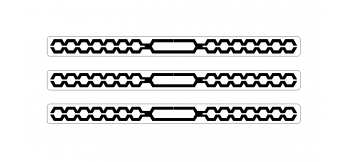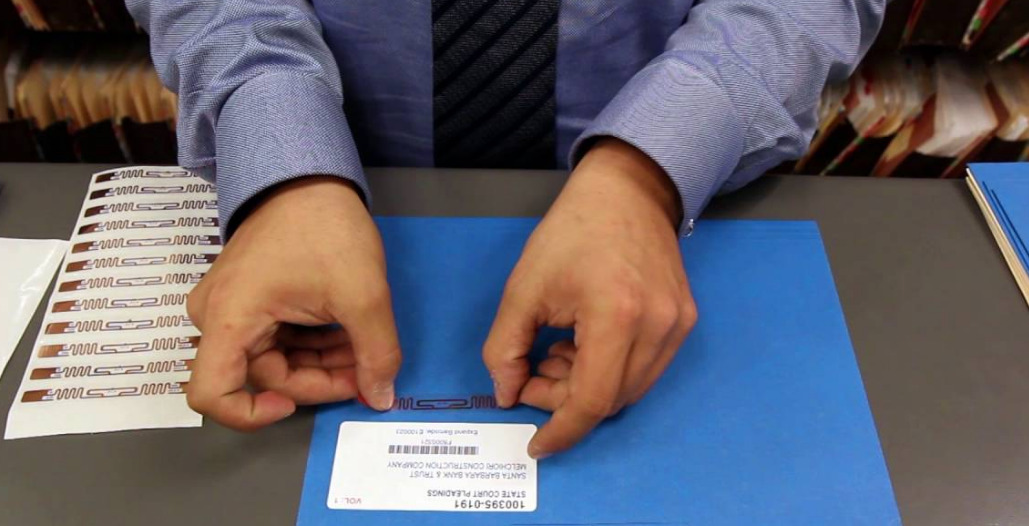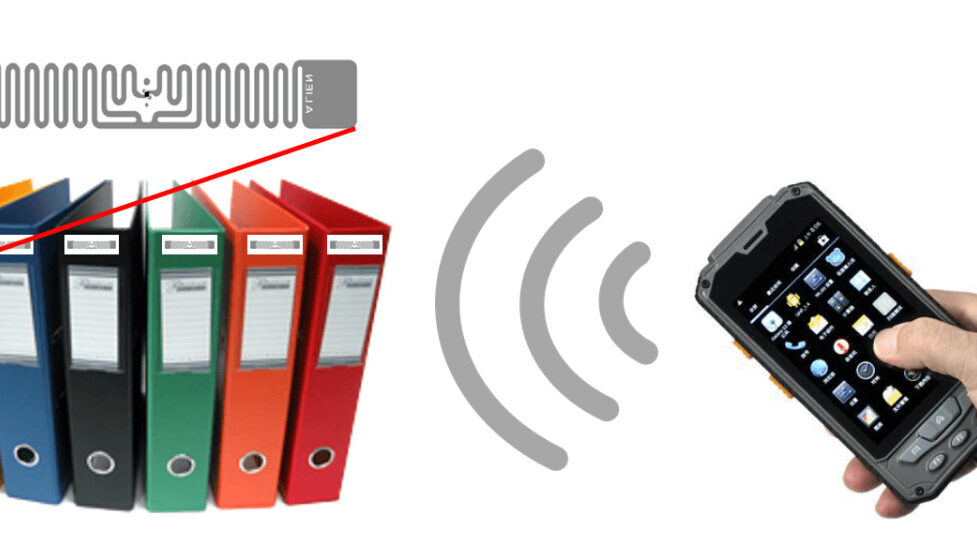Choisir le bon matériel pour un système de suivi des documents RFID est essentiel.
Le système RFID UHF se compose d'un lecteur RFID UHF, Antenne RFID UHF et tag RFID UHF. In the RFID document tracking system. The RFID tag attach to the document box or document bag.
The RFID system sends data to a tracking system with RFID readers and tags, forming automatic data collection. The choice of different RFID devices will have a great impact on the actual application effect of the entire project.
In RFID projects, misreading and low recognition rate are the most common problems for users. And these problems can be solved by choosing appropriate RFID equipment. Voici nos recommandations sur la façon de choisir le bon équipement RFID pour votre système de suivi de documents RFID.

Système de suivi des documents RFID 3
Comment choisir la bonne étiquette UHF pour un système de suivi de documents RFID
Lors de la gestion des fichiers, vous devez identifier le nombre de fichiers qu'il y a dans un classeur. Jusqu'au nombre de dossiers qu'il y a à chaque étage. L'épaisseur du sac de classement est différente, et certains sont aussi minces que 1-2mm. Dans ce cas, nous devons choisir des étiquettes RFID avec de bonnes performances de lecture. When two ordinary RFID tags put together, the performance becomes very poor. Larger changes in tag frequency occur when coupling between tag antennas occurs.

Système de suivi des documents RFID 2
How to choose the right UHF RFID antenna
When it comes to UHF RFID antennas, in actual RFID applications, we often don’t know how to choose. The most important characteristics for selecting an antenna are. Polarization direction, gain de l'antenne, beam angle, operating frequency band, mechanical size and application environment. In the management of files and archives. We need to choose antennas with a very uniform field distribution.
Many people would think that the reader and the near-field antenna of the reader should identify by the near-field antenna. En réalité, this is not true. RFID document tracking systems should use long-range RFID antennas. In many RFID document tracking projects. The antenna installed inside or below the filing cabinet and needs to read from a distance of 15-30cm. The conventional near-field antenna can read up to 30cm under the condition of the reader’s maximum RF output. And the RFID tag should have good performance. So near-field antennas cannot guarantee 100% précision.

Système de suivi des documents RFID 1
How to choose the right UHF RFID reader
We should consider the following points when choosing the right RFID reader:
- La fréquence: Should be UHF (860-960MHz)
- Antenna ports: 2, 4, 8 or more ports
- Interface de Communication: Wifi/RS232/Ethernet/POE
- Reading speed/reading distance
You can choose according to your actual needs.
How to choose the right RFID cabinet
Attentions
Maintenant, there are many types of smart filing cabinets on the market with different functions. Some don’t work very well. If a document not stored in the specified location. The actual location information of the file cannot be found. And only the original registered location information can query. So the location function is useless. Choose intelligent filing cabinets combined with RFID technology. Which can quickly locate, count, and automatically identify in batches. De cette façon, real-time monitoring and intelligent management of the whole process of borrowing, returning, checking and depositing can be realized. The RFID intelligent file cabinet can update the file location information in real time and realize on-site supervision.
To Sum Up
RFID technology has the characteristics of non-contact data collection, good data security. Plus fast reading speed, large capacity of RFID smart labels, longue durée de vie, and reusability. We widely use it in archives, bibliothèques, government and enterprise units, schools and other fields.
Mot-clé: RFIDHY Entreposage Balise NFC Solutions RFID





